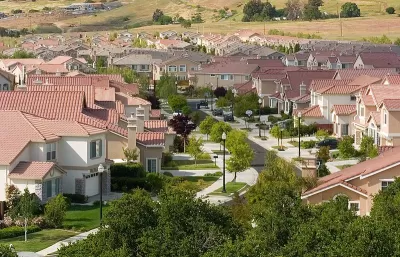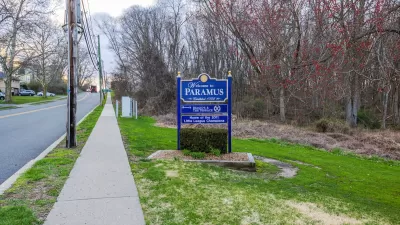The pandemic accelerated existing trends and created unsustainable housing demand in a wider range of towns and cities, exacerbated by outdated zoning restrictions.

The pandemic was predicted to reduce housing costs as people freed by remote work scattered to more affordable markets and reduced pressure on housing stock in hyper-expensive ‘superstar’ cities. But as M. Nolan Gray writes in The Atlantic, “In reality, two years later, housing costs in those superstar metros are at record highs, while the wave of pandemic-era migrations has helped spread the affordability crisis nationwide.”
According to Gray, “You don’t need to study economics to know that surging demand amid stagnant supply causes prices to rise. According to the Case-Shiller Index, nationwide home prices jumped by nearly 20 percent last year alone,” making even historically affordable towns out of reach for local residents.
For Gray, whose recent book, Arbitrary Lines: How Zoning Broke the American City and How to Fix It, highlights the ‘arbitrary constraints’ that keep American housing expensive such as parking requirements and multifamily housing bans, “If we want to contain the spread of high housing costs, these constraints have to go.” These restrictions don’t just affect major cities with already tight housing markets: “Duplexes and fourplexes are banned in 84 percent of residential neighborhoods in Charlotte. In Salt Lake City, minimum-parking mandates mean that apartments can’t be built without either towering garages or huge lots. In Austin, naysayers have successfully delayed a liberalizing zoning overhaul for a decade.”
With land becoming scarce in many cities, wildfires and flooding threatening the wildland-urban interface, and housing costs rising rapidly in more places, affordability is no longer an exclusively coastal concern.
FULL STORY: How California Exported Its Worst Problem to Texas

Trump Administration Could Effectively End Housing Voucher Program
Federal officials are eyeing major cuts to the Section 8 program that helps millions of low-income households pay rent.

Planetizen Federal Action Tracker
A weekly monitor of how Trump’s orders and actions are impacting planners and planning in America.

Ken Jennings Launches Transit Web Series
The Jeopardy champ wants you to ride public transit.

Washington Legislature Passes Rent Increase Cap
A bill that caps rent increases at 7 percent plus inflation is headed to the governor’s desk.

From Planning to Action: How LA County Is Rethinking Climate Resilience
Chief Sustainability Officer Rita Kampalath outlines the County’s shift from planning to implementation in its climate resilience efforts, emphasizing cross-departmental coordination, updated recovery strategies, and the need for flexible funding.

New Mexico Aging Department Commits to Helping Seniors Age ‘In Place’ and ‘Autonomously’ in New Draft Plan
As New Mexico’s population of seniors continues to grow, the state’s aging department is proposing expanded initiatives to help seniors maintain their autonomy while also supporting family caregivers.
Urban Design for Planners 1: Software Tools
This six-course series explores essential urban design concepts using open source software and equips planners with the tools they need to participate fully in the urban design process.
Planning for Universal Design
Learn the tools for implementing Universal Design in planning regulations.
Heyer Gruel & Associates PA
Ada County Highway District
Institute for Housing and Urban Development Studies (IHS)
City of Grandview
Harvard GSD Executive Education
Toledo-Lucas County Plan Commissions
Salt Lake City
NYU Wagner Graduate School of Public Service





























